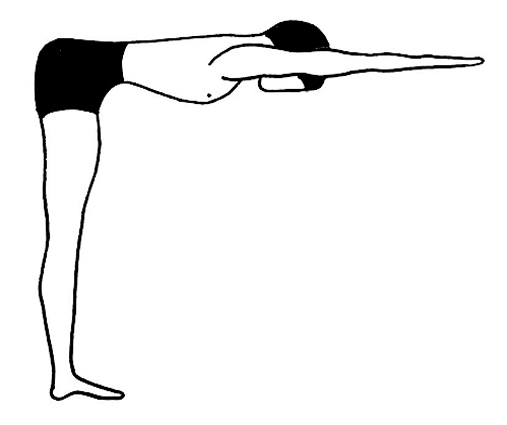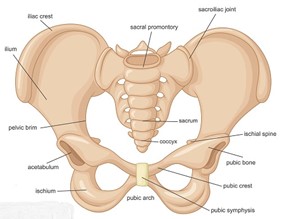BANDHAS ESOTERICALLY
Here I have included some less well known but nevertheless vitally important Bandhas and Chakras. The Bandhas more commonly referred to such as, Mulha Bandha, Uddiyana Bandha and Jalandhara Bandha can be overworked and become counterproductive. When practicing with Bandhas to begin with it may well be a gross action, but ultimately the action is very subtle, and almost indefinable
BANDHAS AS LOCKS
Bandhas are often referred to as locks or seals, and although this may be a correct translation it in no way describes the profound effect that Bandhas have on the physical body, and maybe more importantly on the subtle body.
BANDHAS FOR ALIGNMENT
Bandhas can be employed for postural alignment; to protect joints from hyperextension, to stabilise specific areas of the body and influence the nervous system.

SWADHI BANDHA ESOTERICALLY & PHYSICALLY
Swadhi bandha is in the pelvic bowl above Mulha Bandha and below Nabhi bandha and is influential in maintaining pelvic integrity. One of the main benefits of understanding how to activate Swadhi bandha is the space that it will create around the Sacroiliac joint for forward bending (Nutation). When Swadhi Bandha is in play the pelvis will tend to maintain its neutral alignment and the lumbar spine will keep its natural lordotic curve while forward bending.
Physically this can be activated and felt in a couple of ways when forward bending.
Version 1.
Place the palms of hands flat on the wall and step back to make a right-angle shape with the feet hip distance apart.

HANDS AS HASTA BANDHA
Now with the fingers divided equally press the palms of the hands firmly into the wall, and simultaneously pull the tops of the hands back in the opposite direction.
FEET AS PADA BANDHA
Now press firmly down through the heels and pads of the feet, and simultaneously pull the tops of the feet up in the opposite direction.
SWADHI BANDHA
Feel a lift starting at the heels and rising through the calves, through the back of the knees, the back of the thighs and up to the sit bones. Feeling the sit bones lift and begin to move up an away from each other which will create the effect of the Iliac crests swivelling outwards and then back in towards each other.
This will create space in the Sacrum (Nutation) for deeper forwarding bending.

Version 2.
In Prasarita Padottanasana (wide legged standing forward bend) place the palms of the hands on the floor beneath the shoulders in line with the feet and create Hasta Bandha

Now press the feet down firmly so they can’t move and create a lift through the back of the thighs into the sit bones. This action will again create Nutation as above.
Both versions are powerful actions, so caution is advised when practicing these techniques.
SWADHISTHANA CHAKRA
The Chakra connected with Swadhi bandha is Swadhisthana. This chakra represents how we move through life; our adaptability and our ability to flow or move forward. Openness in the hips is associated with freedom and flexibility, both emotionally and anatomically.

SWADHISTHANA BALANCE
Being open emotionally and physically without awareness can also be counterproductive. As always balance is key to safe and effective movement. If there is existing excessive movement around the Sacrum, then activating Nutation may not be the correct action. It may be that more strength is needed and less movement.
A personality that is too open may also lead to being taken advantage of.
NABHI BANDHA
Nabhi Bandha and Uddiyana Bandha are often talked of as if they are one and the same, as are Nabhi Chakra and Manipura Chakra. I believe Nabhi is below the navel and Uddiyana above the navel.
Nabhi Bandha is above Swadhisthana Bandha and below Uddiyana Bandha and is accessed by contracting the abdomen four fingers below the navel in towards the back of the spine. The area above, Uddiyana bandha, and the area below, Swadhi bandha should remain unaffected. Applying nabhi Bandha individually will tip the pelvis in a neutral position.

BANDHAS AND POSTURE
Swadhi bandha ensures safe and progressive forward bending. When going forward the action comes from the hips ensuring the spine and pelvis stay in neutral. Any rounding of the thoracic spine or lumbar spine suggests Swadhi bandha is not being employed.
HRI BANDHA
Hri bandha will open the heart centre, create space in the back, lift the trunk up from the pelvis, open the arm pits and stretch the lower back. It can be confusing to work with initially, and when we attempt to put into action several different movements at once.
Hri meaning heart or core, is said to be the centre of centres. It is a concept that goes beyond the personal and refers to the universal centre.
Practicing Hri Bandha will not only open our physical heart centre but will also work directly on our subtle body through the connection with Anahata chakra. The heart area it is said is where we experience feelings or attempt to hide from them. Practicing Hri bandha it is said will work to reverse our attempts to hide from our emotions and feelings.
HRI BANDHA IN ACTION
Engaging Hri bandha employs a variety of small adjustments but will shed light on realigning posture.
Standing in Samasthiti
- Bring the hands into prayer at the chest
- Engage a light Mulha and Uddiyana bandha
- Take the awareness to the front floating ribs, and spiral them towards the back, and raise the area above the kidneys
- Simultaneously lift the chest and ribcage up off the pelvis and maintain the lower bandhas
- These actions will make space in the abdomen, and allow the entire ribcage to expand and lift
- The sternum moves forward and up, and the chin drops
- At the same time the armpits spiral from the front, upward and around towards the back

BANDHAS AND ENERGY
Bandhas can also be defined as harnessing energy before it dissipates.
Tapas is commonly translated as austerity and asceticism, and both are correct, but it can also mean the controlled and disciplined use of energy. Practicing Pratyahara is an example of the controlled use of energy. The common interpretation of Pratyahara is sense withdrawal. I would argue pratyahara means being in control of and being disciplined over the information that is constantly coming in through the senses.
SUTRA 2:46
In Sutra 2:46 Patanjali defines how asana is to be experienced.
Motionless and agreeable form (of staying) is asana (yoga posture) Postures should be stable, comfortable and motionless.
PHYSIOLOGY OF BANDHAS
Applying Jalandhara bandha in kumbhaka exerts pressure to baroreceptors in the carotid sinus. The carotid sinus baroreceptor plays a vital role in the control of blood pressure and heart rate.
Afferent signals travel from carotid baroreceptors to the cardiovascular control centre in midbrain via the glossopharyngeal nerve.
The effect stimulates the parasympathetic nervous system, while inhibiting the sympathetic nervous system. The heart rate and blood pressure reduce through vasodilation.
The application of Mulha Bandha activates the parasympathetic nervous system via the splanchnic nerves, which again slows the heart.

LESS COMMON BANDHAS
- Pada bandha (feet)
- Kulpha bandha (ankles)
- Janu bandha (knee)
- Swadhi bandha (pelvis)
- Kati bandha (hip)
- Nabhi bandha (below navel)
- Hri bandha (heart centre)
- Hasta bandha (hand)
- Mani bandha (wrist)
- Kurpara bandha (elbow)
- Amsa bandha (shoulder)
- Ajna bandha (third eye)
HOW MANY BANDHAS?
Commonly three bandhas are discussed, but there are many more.
CONTACT MARTIN
- 00447787357306
- 00359876102654
- askyogadharma@protonmail.com


